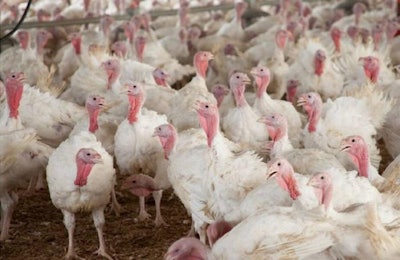
Highly pathogenic avian influenza virus has been detected among poultry in Mexico and Taiwan, while Chile has reported the first occurrence of a low-pathogenic virus for more than two years.
Low-pathogenic avian flu returns to Chile
For the first time since March of 2017, a low-pathogenic avian influenza (LPAI) virus of the H7 group has been detected in Chile. At the end of August, around 13,000 cases were revealed among 67,500 fattening turkeys at a farm in Los Nogales in Valparaiso, according to the agriculture ministry’s report to the OIE. The six-week-old birds had shown no clinical symptoms, but the infection was revealed following routine sampling prior to the birds’ movement to the final finishing facility.
Subsequent testing of the virus revealed its genetic sequence to be similar to that detected in wild birds in Chile on 2016.
Following the announcement of the LPAI virus detection, Hong Kong’s food safety authority suspended imports from the affected province in central Chile. According to Xinhua, the Special Administrative Region of China imported 1,700 metric tons of frozen poultry meat from the South American state during the first six months of this year.
Avian influenza in Mexico
Around one month after the last outbreak of highly pathogenic avian influenza (HPAI) in Mexico, the virus has been detected in two more poultry flocks, bringing the total number of outbreaks linked to the H7N3 virus subtype since March of this year to 24.
According to the official report from the national animal health agency, Senasica, to the World Organisation for Animal Health (OIE), the virus was discovered as a result of routine surveillance among a flock of around 153,000 commercial layers in Totolan in the state of Jalisco, and another of “fattening birds” numbering almost 400,000 at Ezequiel Montes in Queretaro.
Quarantine was immediately applied to each site, according to Senasica. Both states report a low prevalence of HPAI, and permit vaccination against the H7N3 virus where prior authorization has been obtained from the agency.
These latest cases bring Mexico’s total direct losses from mortality and culling as a result of HPAI this year to almost 1.03 million head of poultry.
Two new outbreaks reported in Taiwan
There has been one new outbreak of HPAI linked to the H5N2 virus variant, according to the latest report to the OIE from Taiwan’s Council of Agriculture. In a first outbreak in Chiayi county this year, the virus was detected after around 2,500 birds died of a flock of more than 48,600 laying quail in the town of Xikou.
In recent days, the same virus was detected in a flock of more than 5,100 ducks in Wandan town in Pingtung county. The infection was revealed as the result of sampling, reports Taiwan News, as the ducks showed no signs of the disease. The affected premises have been disinfected, and poultry within one kilometer will be subjected to intensive monitoring. Taiwan’s poultry farmers are being advised against allowing poultry access to free range in order to reduce the chance of spreading the HPAI virus.
View our continuing coverage of the global avian influenza situation.

















